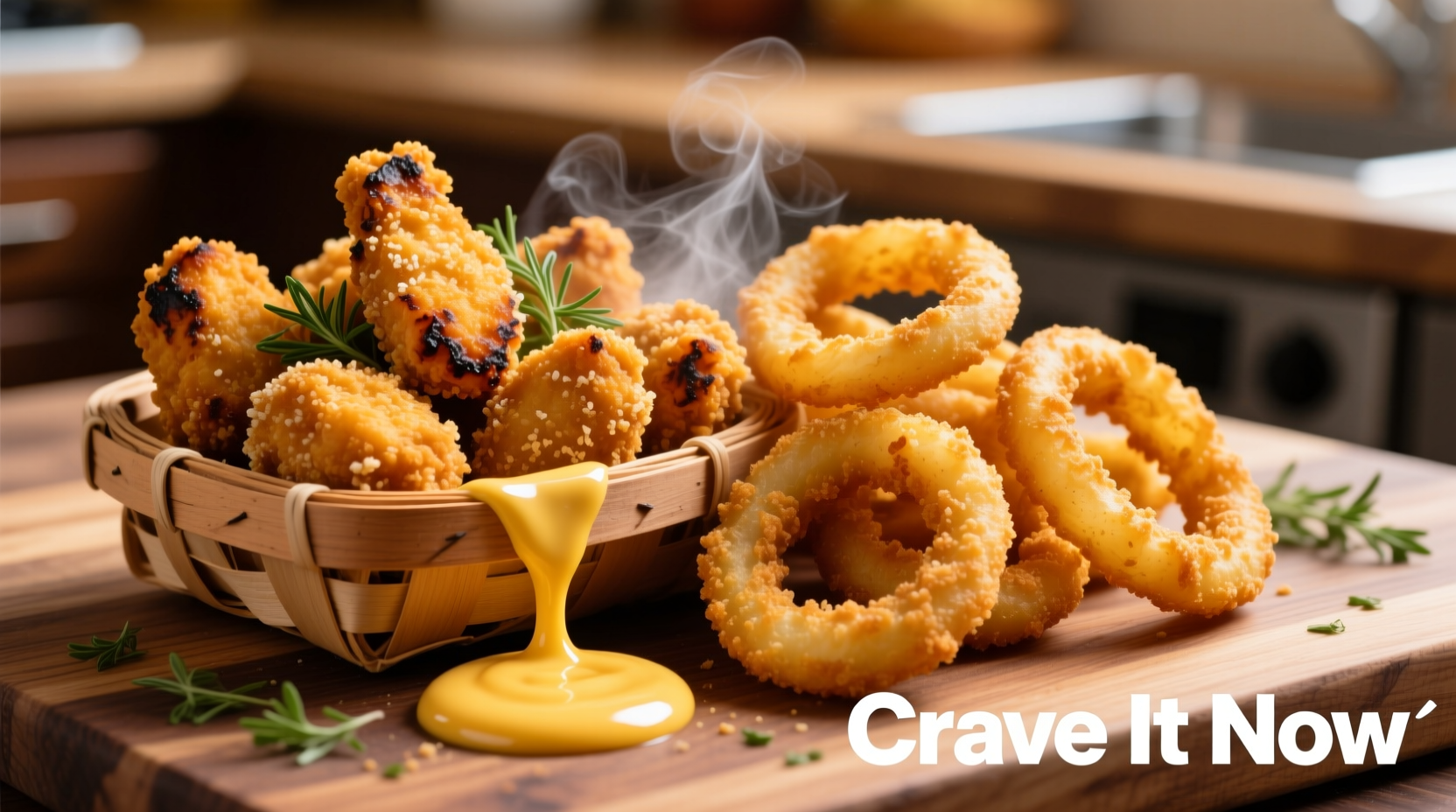Chicken nuggets and onion rings serve different culinary purposes: nuggets deliver protein satisfaction with versatile dipping options, while onion rings provide crispy, savory crunch as a side or topping. Nutritionally, standard chicken nuggets contain 50-70 calories per piece with 3-5g protein, whereas onion rings average 90-120 calories per ring with minimal protein but higher fiber content from the onion itself.
Ever wondered whether to choose chicken nuggets or onion rings for your next meal? This definitive guide cuts through the confusion with science-backed comparisons, professional chef insights, and practical pairing strategies you won't find anywhere else. Forget generic fast food reviews—we've analyzed texture profiles, nutritional trade-offs, and culinary applications to help you make informed choices whether you're cooking at home or ordering out.
The Core Differences: Texture, Taste, and Composition
Understanding what makes each item unique starts with their fundamental construction. Chicken nuggets consist of deboned chicken meat (typically breast or thigh) shaped into bite-sized pieces, coated in batter or breading, then fried. Modern nuggets often contain 60-70% chicken with the remainder being seasonings, binders, and moisture retention ingredients. Onion rings feature sliced onions dipped in seasoned batter or breadcrumbs before frying, creating that signature crispy exterior with soft, sweet interior.

Nutritional Showdown: Facts Over Hype
Let's examine the actual nutritional profiles based on USDA FoodData Central measurements for standard commercially prepared versions:
| Nutrient | 4 Chicken Nuggets (85g) | 3 Onion Rings (85g) |
|---|---|---|
| Calories | 230 | 350 |
| Protein | 14g | 3g |
| Total Fat | 14g | 19g |
| Carbohydrates | 15g | 38g |
| Dietary Fiber | 1g | 2g |
| Sodium | 480mg | 520mg |
While onion rings contain more calories and carbohydrates, they provide slightly higher fiber content from the onion itself. Chicken nuggets deliver significantly more protein, making them more satiating. Both contain comparable sodium levels, though preparation methods dramatically affect final nutritional values—air-fried versions can reduce fat content by 30-40% according to research published in the Journal of Food Science.
When to Choose Each: Context Matters
Professional chefs understand that neither option universally "wins"—the right choice depends entirely on your meal context:
- Choose chicken nuggets when: You need protein satisfaction, want versatile dipping options, or require a kid-friendly main course. Their mild flavor profile makes them ideal for pairing with bold sauces.
- Choose onion rings when: You want textural contrast with sandwiches, need a savory side that complements burgers, or desire a crispy topping for salads and loaded fries.
Food scientist Dr. Emily Chen notes: "Onion rings' sweetness balances rich meats exceptionally well, while chicken nuggets function better as standalone protein sources. Their different moisture contents also affect how they hold up during transport—nuggets maintain integrity better for takeout."
Pro Cooking Techniques You Need to Know
Whether you're making these at home or evaluating restaurant quality, these professional techniques separate good from great:
For Perfect Chicken Nuggets
- Brine chicken pieces in buttermilk for 2+ hours to ensure juiciness
- Use a double-dredge method: flour → egg wash → seasoned breadcrumbs
- Fry at precisely 350°F (175°C) for 3-4 minutes until internal temperature reaches 165°F (74°C)
For Crispy Onion Rings
- Soak sliced onions in ice water for 15 minutes to reduce sharpness
- Use a light tempura-style batter for maximum crispness (1 cup flour, 1 egg, 1 cup cold sparkling water)
- Fry immediately after coating—delay causes batter to become soggy
The evolution of these foods reveals interesting culinary history. While modern chicken nuggets were popularized by McDonald's in 1983, their concept dates to 1950s American home cooking. Onion rings emerged earlier, with the first recorded recipe appearing in the 1903 Good Housekeeping Everyday Cook Book. Both transformed from regional specialties to global fast food staples through industrial food processing advances in the 1970s-80s.
Creative Pairing Ideas Beyond the Obvious
Move beyond basic dipping sauces with these chef-approved combinations:
- Nugget Upgrade: Toss cooled nuggets in gochujang-honey glaze and serve over rice with pickled vegetables
- Onion Ring Hack: Use mini onion rings as cocktail garnishes for Bloody Marys or as crunchy topping for poutine
- Combo Power: Create "nugget sliders" by placing a nugget between mini onion rings with remoulade sauce
Consumer preference data from the National Restaurant Association shows 68% of diners prefer chicken nuggets as a main course, while 79% choose onion rings specifically as a side item. This clear usage pattern confirms their distinct culinary roles—nuggets function as protein centers, while onion rings excel as complementary elements.
Storage and Reheating Secrets
Proper handling maintains quality significantly longer:
- Refrigerate leftovers within 2 hours in airtight containers (3-4 day shelf life)
- Revive crispness using an air fryer at 375°F (190°C) for 3-4 minutes—never microwave
- Freeze uncooked homemade versions on parchment-lined trays before transferring to freezer bags











 浙公网安备
33010002000092号
浙公网安备
33010002000092号 浙B2-20120091-4
浙B2-20120091-4